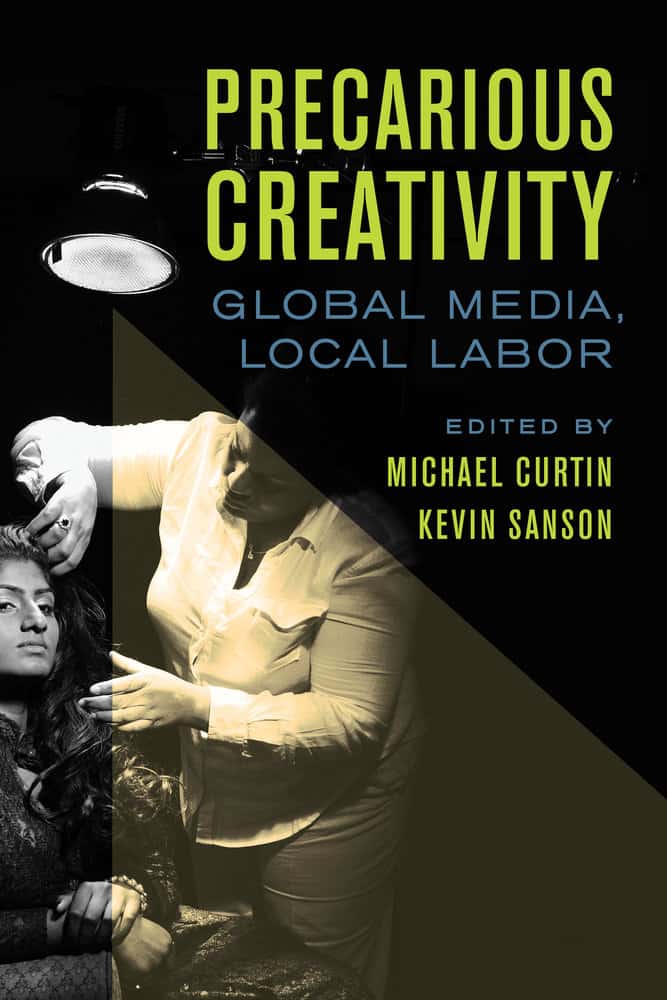May Day, “International Worker’s Day,” is a curiously un-American holiday. Celebrated by labor groups and political parties outside the United States, it began in 1890 as a global day of solidarity to commemorate those who lost their lives in Chicago’s Haymarket Square while demonstrating for an eight-hour workday. Haymarket, a symbol of labor’s rising activism, also sparked America’s first major “red scare,” a political backlash that created tensions within the U.S. labor movement and hived it off from its counterparts around the world. That legacy is still with us, as most American labor organizations  continue to frame issues through the prism of national interest. Even in Hollywood, labor groups describe their most pressing challenges in terms of “runaway production,” which is industry parlance for out-sourcing. Consequently, many workers fail to grasp the larger set of forces that is killing jobs, intensifying workplace pressures, and undermining creativity. They also have a hard time making connections between the challenges they face and those confronted by counterparts overseas. Interestingly, the situation isn’t so different in Bollywood (Mumbai), Nollywood (Lagos), and Prague, as demonstrated by two dozen scholars in Precarious Creativity: Global Media, Local Labor, a newly released UC Press volume that’s also available through the Luminos open access platform.
continue to frame issues through the prism of national interest. Even in Hollywood, labor groups describe their most pressing challenges in terms of “runaway production,” which is industry parlance for out-sourcing. Consequently, many workers fail to grasp the larger set of forces that is killing jobs, intensifying workplace pressures, and undermining creativity. They also have a hard time making connections between the challenges they face and those confronted by counterparts overseas. Interestingly, the situation isn’t so different in Bollywood (Mumbai), Nollywood (Lagos), and Prague, as demonstrated by two dozen scholars in Precarious Creativity: Global Media, Local Labor, a newly released UC Press volume that’s also available through the Luminos open access platform.
As these scholars show, motion picture production practices in cities around the world are growing more closely aligned under the pressures of media globalization and corporate conglomeration. Distribution protocols and audience behaviors are also converging. Although these transformations offer fresh opportunities for media makers and their fans, they also open the door to managerial strategies that exact a heavy toll on workers and make it difficult for them to organize and respond. Interestingly, one of the most widely shared complaints is about the long workdays that run well past the eight-hour limit advocated by Haymarket demonstrators more than a hundred years ago!

Precarious Creativity provides a window into the everyday lives of film, television, and video game workers, while also offering a critical perspective that makes connections and comparisons across the globe. Essays also reflect on the prospects for labor activism and transnational organizing. We are therefore delighted to have the opportunity to release it on the Luminos open access platform where it is already reaching a global audience. Only weeks after publication Precarious Creativity has been accessed by readers in Nigeria, India, and the Czech Republic; and it has generated a bit of buzz stateside as well, even in Hollywood.
So here’s to May Day, and to greater awareness of the diverse yet interwoven challenges facing media workers around the world!
 Michael Curtin is the Duncan and Suzanne Mellichamp Professor of Global Studies in the Department of Film and Media Studies and cofounder of the Media Industries Project at the University of California, Santa Barbara. His previous books include The American Television Industry; Reorienting Global Communication: Indian and Chinese Media Beyond Borders; Playing to the World’s Biggest Audience: The Globalization of Chinese Film and TV; andDistribution Revolution: Conversations about the Digitial Future of Film and Television.
Michael Curtin is the Duncan and Suzanne Mellichamp Professor of Global Studies in the Department of Film and Media Studies and cofounder of the Media Industries Project at the University of California, Santa Barbara. His previous books include The American Television Industry; Reorienting Global Communication: Indian and Chinese Media Beyond Borders; Playing to the World’s Biggest Audience: The Globalization of Chinese Film and TV; andDistribution Revolution: Conversations about the Digitial Future of Film and Television.
 Kevin Sanson is a Lecturer in Entertainment Industries at Queensland University of Technology in Australia. He is coeditor of Distribution Revolution: Conversations about the Digital Future of Film and Television and Connected Viewing: Selling, Streaming, & Sharing Media in the Digital Era and is part of the founding editorial collective of Media Industries, the first peer-reviewed open-access journal for media industries research.
Kevin Sanson is a Lecturer in Entertainment Industries at Queensland University of Technology in Australia. He is coeditor of Distribution Revolution: Conversations about the Digital Future of Film and Television and Connected Viewing: Selling, Streaming, & Sharing Media in the Digital Era and is part of the founding editorial collective of Media Industries, the first peer-reviewed open-access journal for media industries research.

